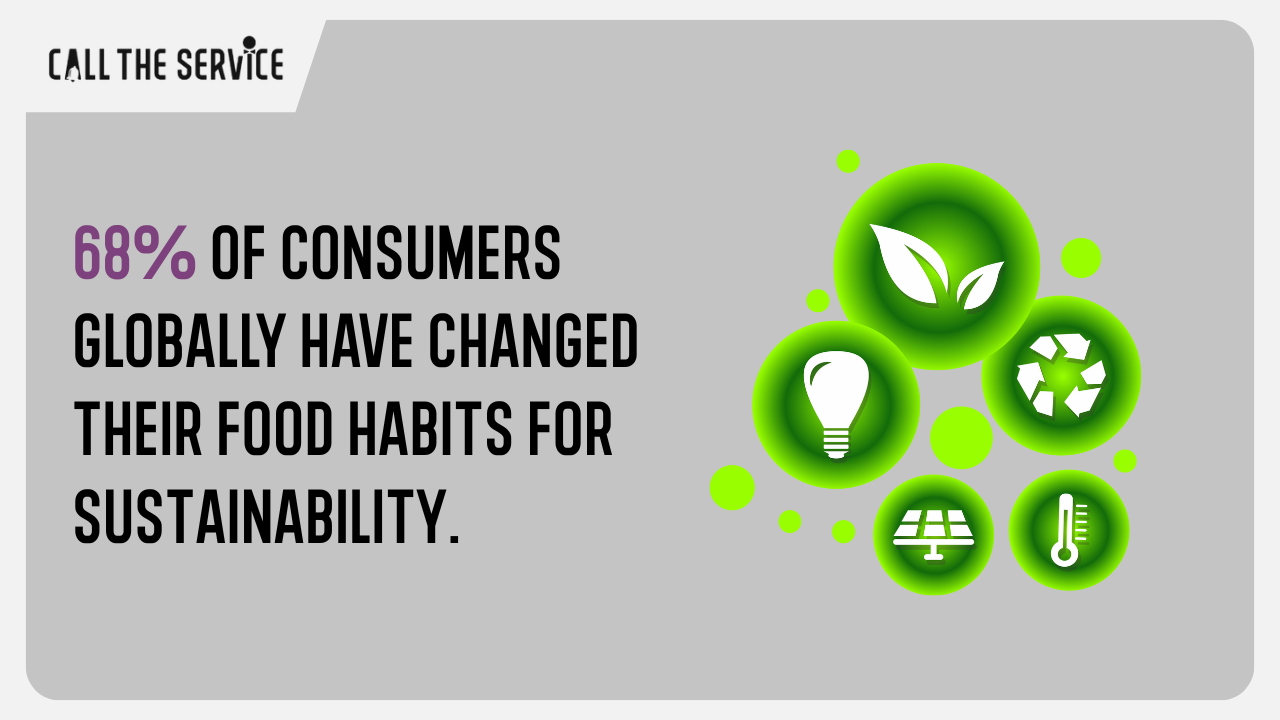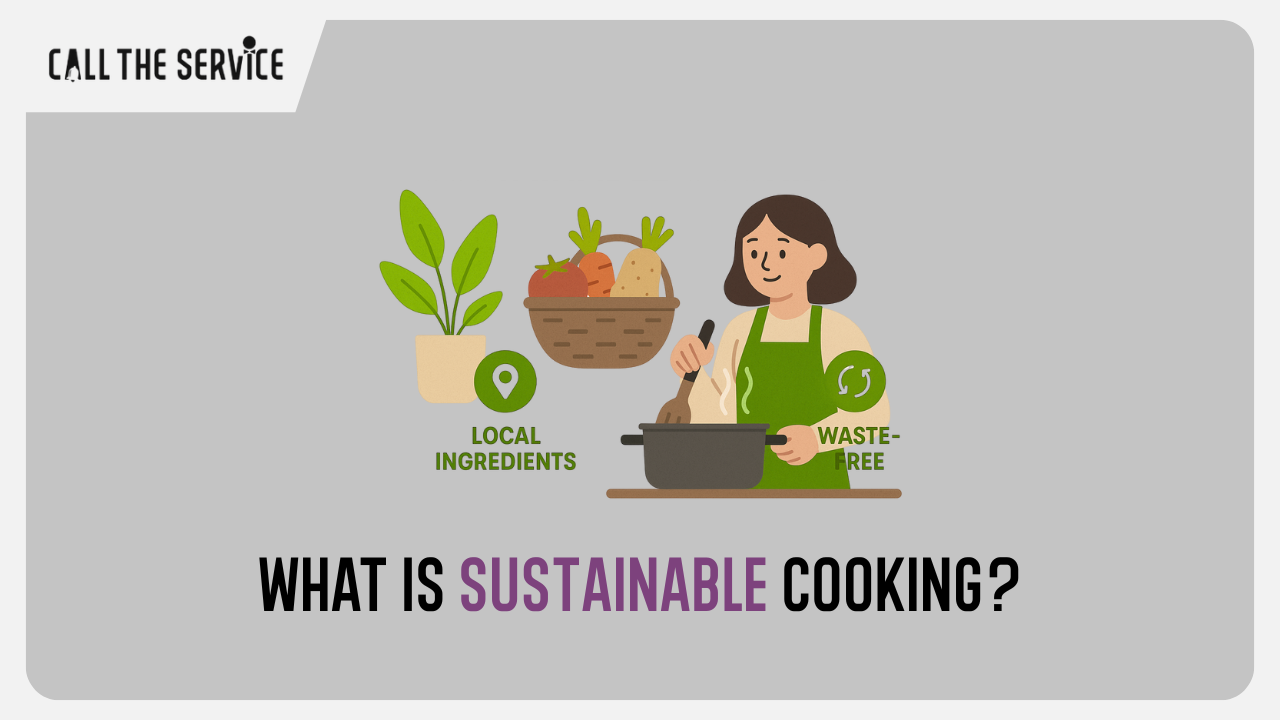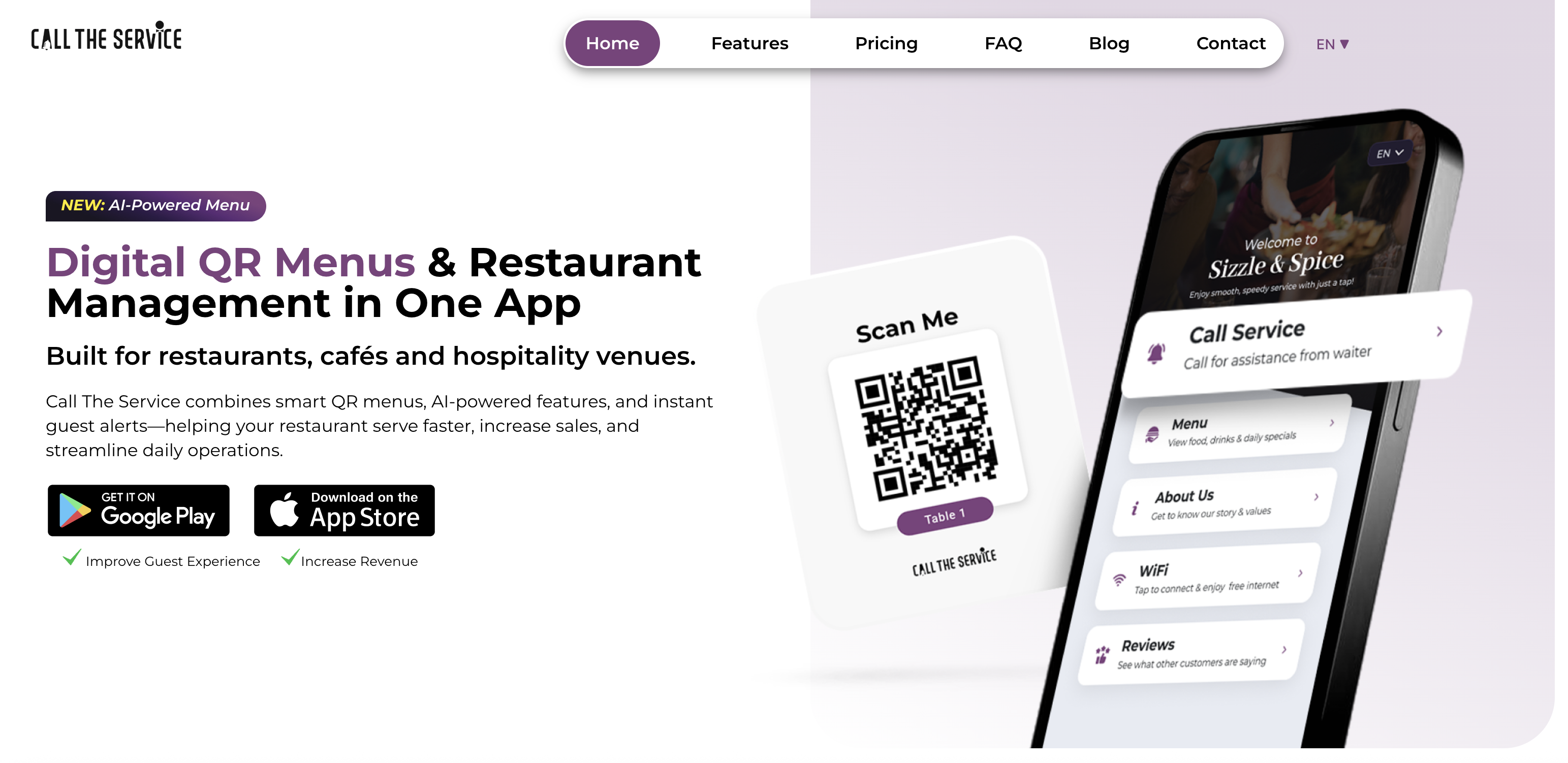Every ingredient used in a professional kitchen impacts the environment. For restaurant and club owners, adopting sustainable cooking practices is not only an ethical choice but also a smart business decision. These practices reduce operational costs, improve reputation, and create a positive dining experience that appeals to increasingly eco-conscious customers.

What is sustainable cooking?

What are the environmental impact of cooking methods?
Energy consumption
Indoor air quality
Fuel sources
What are the environmental impact of cooking with renewable energy sources?
- Solar cooking: Solar ovens use the sun’s energy to prepare meals, cutting down on electricity and gas consumption. They are particularly effective in sunny climates.
- Induction cooking: Induction stoves use electromagnetic energy to heat cookware directly, making them more energy-efficient than gas or traditional electric stoves.
- Biogas stoves: These stoves utilize methane gas from organic waste (such as food scraps or animal manure), reducing landfill waste while providing a sustainable cooking method.
- Hydropower and wind-powered electric cooking: If your home or restaurant is powered by renewable electricity sources such as hydropower or wind energy, using electric convection ovens and slow cookers is a sustainable option.
Preventing food waste
- Utilize Every Part of an Ingredient: If it’s edible, use it! Strive for zero-waste menus and communicate sustainability efforts to customers.
- Composting and Recycling: Proper waste disposal prevents food from ending up in landfills and helps create compost for future food production.
How guests can contribute to sustainable dining
Choose Sustainable Restaurants: Guests can actively choose to dine at restaurants that have implemented sustainable cooking practices, such as sourcing local ingredients, reducing food waste, and using energy-efficient appliances. By supporting eco-conscious businesses, diners can encourage more establishments to adopt sustainability efforts.
What are some ways Chefs can Incorporate Sustainable Practices into their Cooking?
Chefs play a pivotal role in driving sustainability within restaurants and clubs. By embedding sustainable cooking practices into everyday operations, kitchens can reduce costs, enhance efficiency, and meet the rising expectations of eco-conscious guests. Practical strategies include:
Prioritize grains and legumes: Incorporate nutrient-rich, plant-based staples such as lentils, quinoa, and beans to provide protein alternatives with a lower environmental footprint.
Use ethically sourced herbs and spices: Opt for suppliers that guarantee responsible farming and fair trade practices, ensuring both quality and sustainability.
Select sustainable proteins: Replace industrially farmed meats with options such as organic eggs, tofu, and wild-caught or responsibly farmed fish.
Cook with sustainable oils: Choose oils like olive or avocado, which are less processed and more eco-friendly, while avoiding palm oil due to its significant environmental impact.
Design seasonal, local menus: Build dishes around ingredients that are locally grown and naturally in season, reducing food miles and storage costs while enhancing flavor.
Adopt zero-waste cooking techniques: Repurpose vegetable scraps into stocks, transform peels into flavor enhancers, and preserve excess produce for future use.
Conserve water and energy: Train staff on efficient washing methods, implement low-water cooking techniques like steaming, and make use of energy-efficient equipment.
For hospitality businesses, implementing these sustainable cooking practices not only reduces the kitchen’s ecological footprint but also strengthens brand reputation. Diners are more likely to support establishments that align with their values, making sustainability a competitive advantage as well as an environmental responsibility.
Why Is Sustainable Cooking Important?
For restaurants and clubs, the importance of sustainable cooking practices goes far beyond environmental benefits—it’s directly tied to business growth, customer loyalty, and long-term profitability.
1. Meeting Customer Expectations
Today’s diners are increasingly eco-conscious. By aligning with these values, restaurants and clubs can attract and retain a loyal customer base that actively seeks out environmentally responsible dining options.
2. Reducing Operational Costs
Sustainable cooking practices—such as minimising food waste, sourcing seasonal produce, and conserving energy—translate into tangible savings. Efficient kitchens waste fewer resources, helping businesses cut down on utility bills, purchasing costs, and disposal fees.
3. Strengthening Brand Reputation
Businesses that adopt visible, authentic sustainability measures stand out in competitive markets. Showcasing a commitment to responsible sourcing, fair trade, and zero-waste initiatives enhances brand credibility and positions your establishment as a leader in hospitality innovation.
4. Supporting Compliance and Future Regulations
With governments across the US, UK, and EU tightening environmental standards, adopting sustainable cooking practices now helps future-proof your business. Early adoption reduces compliance risks and ensures smooth adaptation to evolving industry regulations.
5. Protecting the Planet for Future Generations
Beyond the financial and reputational advantages, sustainability is a moral responsibility. By reducing greenhouse gas emissions, cutting food waste, and conserving natural resources, restaurants and clubs actively contribute to a healthier planet and a stronger community.
How the call-the-service app can Enhance Sustainable Cooking?

The “Call The Service” app can significantly contribute to sustainable cooking by optimizing restaurant operations, reducing waste, and promoting eco-friendly practices. Here are the key ways in which this digital solution supports sustainability in the restaurant industry:
1. Digital Menus
With CTS, printed menus are replaced by dynamic QR-based menus that can be updated instantly with new dishes, pricing, allergen details, and seasonal offers. This eliminates the need for constant reprinting while keeping guests informed with accurate information.
Sustainability Benefit: Reduces paper consumption, printing costs, and emissions linked to menu production.
2. Accurate Order Management
Guests place their orders directly through the system, ensuring clear communication between tables, staff, and kitchen teams. By eliminating order errors and miscommunication, the restaurant avoids unnecessary returns and wasted meals.
Sustainability Benefit: Minimizes food waste and maximizes kitchen efficiency.
3. Smarter Inventory Awareness
Because every order is digitally tracked, restaurants gain clearer insights into stock levels and sales trends. This supports better forecasting and purchasing decisions, helping managers avoid over-ordering perishable items.
Sustainability Benefit: Reduces spoilage and unnecessary waste while improving profitability.
4. Optimized Table and Staff Management
Each request is routed directly to the appropriate staff member through the table’s QR code. This streamlines service, prevents repeated trips, and ensures resources are used efficiently.
Sustainability Benefit: Cuts down excess energy use in kitchens and front-of-house while boosting service speed.
5. Reduced Single-Use Materials
All communication—orders, service calls, and feedback—is handled digitally, removing the need for disposable slips, tickets, or paper notes.
Sustainability Benefit: Decreases reliance on plastics and other single-use materials, lowering landfill contributions.
6. Guest Feedback and Ratings
CTS automatically collects ratings and feedback after service calls. This not only improves customer satisfaction but also helps restaurants identify inefficiencies in workflows or resource usage.
Sustainability Benefit: Drives continuous improvement in service quality and sustainable practices.
7. Multilingual Menus
Menus can be instantly translated into more than 100 languages, ensuring clarity for international guests without the need for multiple printed versions.
Sustainability Benefit: Enhances inclusivity and accessibility while reducing waste from duplicate menu sets.
8. AI-Generated Dish Images
The app’s AI feature creates consistent, professional dish images automatically. Restaurants no longer need to invest in repeated photo shoots or food styling for menu updates.
Sustainability Benefit: Saves resources and time while maintaining visually appealing, accurate menus.
The Importance of fair trade in sustainable cooking
What is fair trade?
- Direct trade with farmers to eliminate excessive middlemen.
- Democratic decision-making among agricultural workers.
- Sustainable farming practices that reduce environmental harm.
Common fair trade products: Coffee, Tea, Chocolate, Bananas, Sugar and Cocoa
Conclusion
Embracing sustainable cooking is a rewarding journey that benefits both human health and the planet. By making conscious choices—choosing local and seasonal ingredients, minimizing waste, cooking with renewable energy, and supporting fair trade—restaurants and individuals can significantly reduce their environmental impact.
To take a step toward sustainability in your dining experience, download the Call The Service app today and start making a difference!



